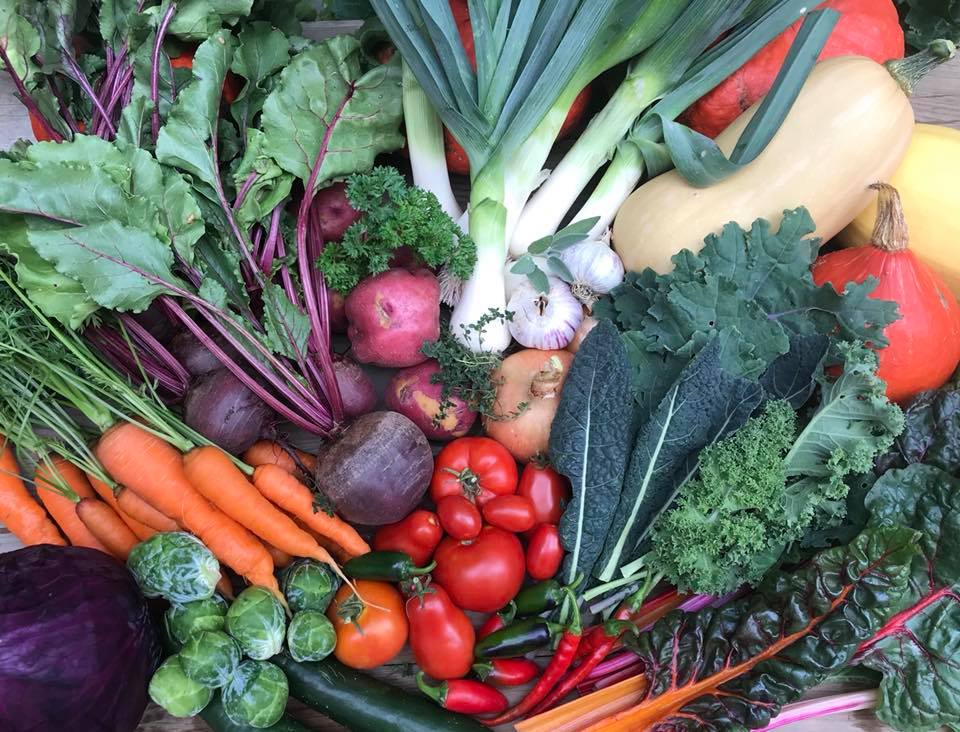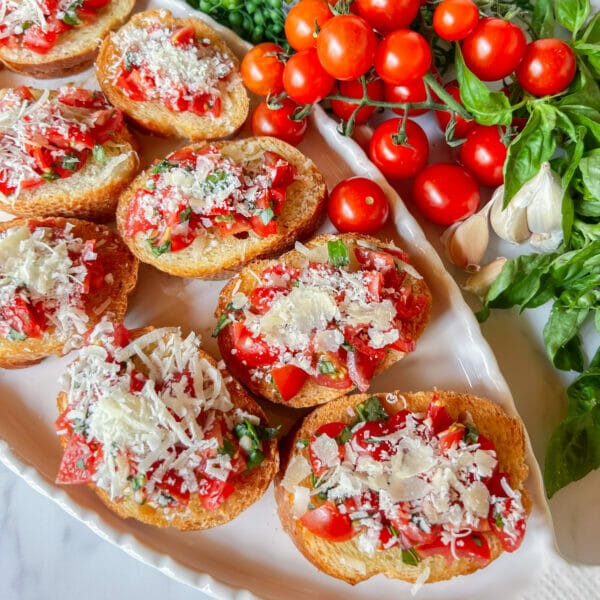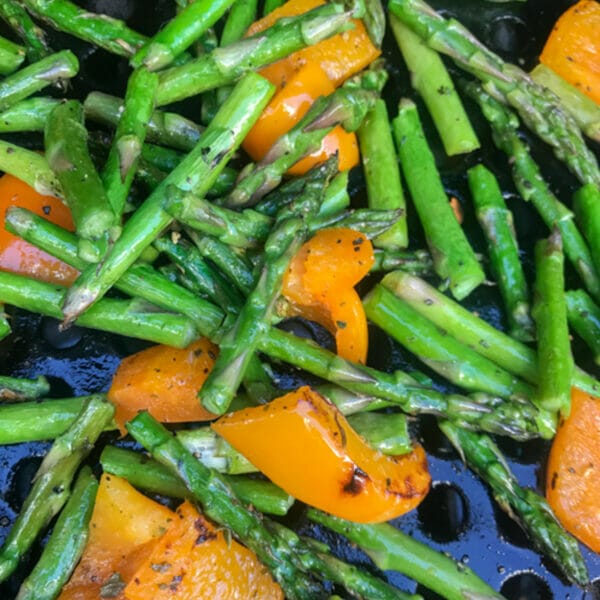Why We Don’t Eat Enough Vegetables
Why don’t we eat enough veggies? We know they’re good for us and we tell our kids to eat them – so what’s our problem – why don’t we eat enough vegetables?

Read More: Healthy Eating on a Budget, Enjoying Local/Seasonal Food, How to Eat More Veggies & Save Time in the Kitchen, How to Season Vegetables
Why We Don’t Eat Enough Veggies
We can be more successful at eating more veggies if we overcome the key reasons people give for not eating vegetables. Here are those top 5 reasons and what to do about them.
1. Vegetables Take Too Much Time to Prepare
It’s true that vegetables take more time to prepare and cook than many grab and go convenience foods, but we can become more efficient at it so that we stop sacrificing nutrition for convenience.
- Dedicate time each week for veggie prep. Wash, chop, and store vegetables in advance so they’re easy to snack on and easier to use in cooking. An ideal time would be right after grocery shopping before you tuck them in the fridge.
- Use frozen vegetables more often – they’re already washed and chopped making them quick and easy to use. Avoid overcooking them and season them well for best results.
- Make quick and easy recipes that require short cooking time, such as stir-fries or sheet pan dishes.
- Stop peeling every vegetable. Take a short cut and just wash carrots, potatoes, sweet potatoes, parsnips and beets; in many recipes they just need a good wash.
2. Vegetables Don’t Taste Good
Poorly prepared by under seasoning, or over or under cooking veggies have turned off a lot of potential veggie lovers. And sadly we’ve grown accustomed to the salt, sugar and high fat in highly processed, ready-made, or convenience foods. It’s hard for veggies to compete with highly engineered foods designed to be craveable. We need to make vegetables more appealing – here’s some ideas:
- Experiment with different cooking methods, such as roasting, grilling, or sautéing, to enhance their taste and texture. For example, the only way I enjoy Brussels sprouts is when they’re raw and shredded into a salad.
- Season vegetables well. Use herbs, spices, and flavorful sauces to add a little oomph to your veggies.
- Blend veggies into smoothies or soups for an inconspicuous taste experience.

3. Fresh Vegetables Cost Too Much
Vegetable prices have soared by 5 to 7% in the last year, that’s on top of similar increases in the last several years. It hits hard and makes cheap processed food look like a tempting way to fill bellies. But at what cost? You can’t afford the time off work, prescriptions or medical bills that come with poor health. Keep vegetables on your grocery list as an investment in your health and future well being. Try these tips to keep costs as low as possible.
- Buy seasonal produce that’s on sale.
- Practice meal planning to avoid unused veggies going to waste in your fridge.
- Use frozen or canned veggies.
- Try growing some of your own veggies. A small planter of fresh lettuce greens in early summer tastes amazing and is much more affordable than store bought lettuce.

4. Vegetables Are Boring
People are stuck making the same veggies the same way. Relying on the same veggies and recipes leads to boredom as a cook and a ho hum eating experience at dinner time. Break out of the veggie rut with these ideas.
- Do a google search and find some new recipes to try.
- Experiment with a “new to you” vegetable.
- Explore cuisines from around the globe to introduce exciting flavours and cooking techniques.
- Use new spice blends or fresh herbs to liven up veggie dishes. Read 11 Ways to Season Veggies.
5. Vegetables are for Salads
When people think of eating more veggies they think of salads and carrot sticks. Veggies can be so much more! Get your fill by adding more vegetables to existing dishes like soups, sauces, curries, casseroles, egg dishes, etc. I love salads and veggies and dip – but I get most of my veggies in other forms like the following:
- breakfast dishes – frittatas, omelelettes, egg sandwich, etc.
- stir fries
- smoothies
- casseroles
- soups, stews and curries
- sauces (meat sauce, tomato sauce)
- appetizers (veggie rolls, wraps)
- Pizza
- sandwiches
- sheet pan dinners

Why Eat More Veggies?
It’s a sham we don’t eat enough vegetables. Vegetables offer a mix of vitamins, minerals, fibre, and antioxidants critical to our good health. Eating plenty of vegetables has been linked to reduced risk of chronic diseases, improved digestion, enhanced energy levels, and better weight management. Here are just a few organizations that support eating more veggies.
- Canada’s Food Guide
- MyPlate (USDA)
- Mayo Clinic
- American Heart Association
- Alzheimer Society of Canada
- Heart & Stroke Canada’s Guide to Healthy Eating
- Eating Healthy by Canadian Diabetes Association
- Eating Well by the Canadian Cancer Society
How Many Veggies Should We be Eating
Every age and stage of life and every person – based on activity level and genetic make up has different needs. So if you want in depth about exact amounts for you consult a Registered Dietitian or GP. In general, here are the recommendations.
- fill Half Your Plate with veggies at every meal
- eat 5-7 servings/day, a serving is at least 1/2 cup
For me, this is my goal – when I eat this amount consistently, then I may want to get into nitty gritty details – but until then, this is all I need to know. But, if you want to know more here’s…
Who says what about how many veggies we should eat:
Some experts and health organizations recommend HALF of EVERY plate we eat (breakfast, lunch, and dinner) MyPlate (USDA), Canada’s Food Guide) should be filled with veggies.
The American Heart Association says 5 servings of veggies and 4 servings of fruit should help reduce risk of chronic health conditions. And Mayo Clinic says to aim for 1 serving at breakfast, 2 at lunch and 3 at supper for 6 servings per day.
The serving sizes recommended varies too, some say a serving is about 80g or 1/2 cup of veggies or 1 cup of leafy greens and some say 1 cup of veggies, 3 cups of leafy greens and 1/2 cup of legumes equals a serving.
Are you eating that many veggies?
Eating more vegetables doesn’t have to be boring or a chore, with a little effort it’s possible to get truly enjoyable vegetables every day. Follow along right here for recipes and tips to help you and me eat more veggies.
Select, store and serve seasonal food for everyday cooking with Getty. Getty is a food educator and Professional Home Economist, who loves sharing tips and recipes following the seasons from her Canadian kitchen. Sign up to get seasonal tips and recipes delivered to your inbox. Learn more about Getty or check out her books and pdf guides.

